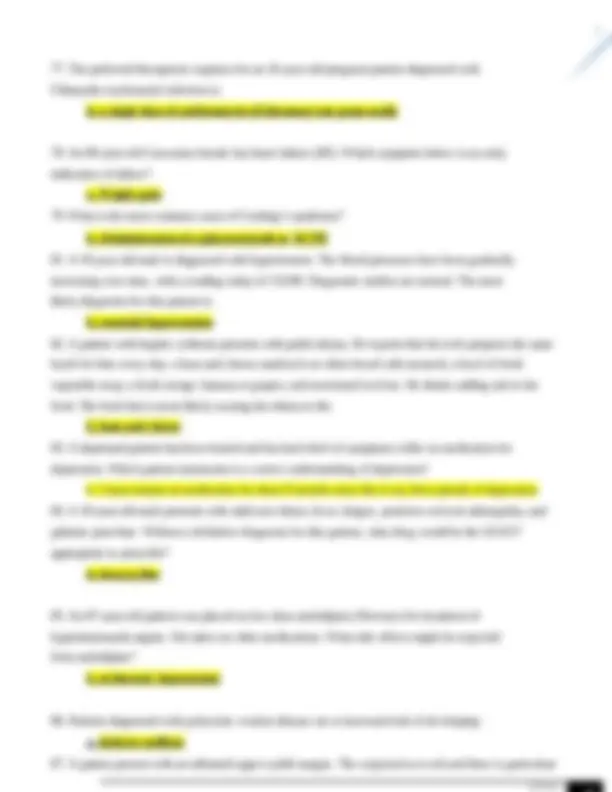











































Study with the several resources on Docsity

Earn points by helping other students or get them with a premium plan


Prepare for your exams
Study with the several resources on Docsity

Earn points to download
Earn points by helping other students or get them with a premium plan
Community
Ask the community for help and clear up your study doubts
Discover the best universities in your country according to Docsity users
Free resources
Download our free guides on studying techniques, anxiety management strategies, and thesis advice from Docsity tutors
NSG 6340 Predictor Study Guide 2 Questions & Answers(South University))
Typology: Exams
1 / 49

This page cannot be seen from the preview
Don't miss anything!










































A 37-year-old female patient with a history of a single episode of depression and frequent complaints of PMS is being treated for hypothyroidism. Today she complains of poor concentration and fatigue. Initially, the NP should: a. Question her further
extremities. b. peripheral artery insufficiency
it, the nurse practitioner should ask: a. whether he smokes or consumes alcohol on a daily basis b. what other medications have been prescribed for him c. if he takes a daily antihistamine d. if other family members are hypertensive
offer this patient? c. Oral acyclovir (Zovirax) for 7-10 days, NSAIDs, and topical capsaicin cream after resolution of the lesions
d. pain
diagnoses “Syndrome X.” This diagnosis is based on the previous findings plus all of the following EXCEPT: d. cardiac arrhythmias
a. thiazide diuretic b. angiotensin-converting enzyme inhibitor
c. herpes simplex d. chlamydia